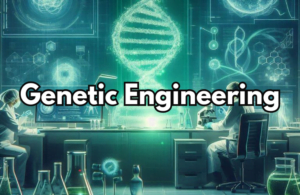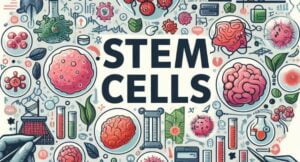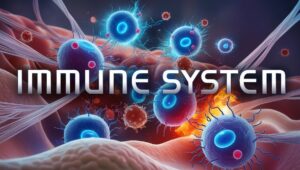What Makes Mitochondrial DNA Special?
Mitochondrial DNA is a unique genetic material passed down maternally, which is a fascinating aspect of genetics that offers insight into our ancestry and health. Unlike the DNA in our cell nuclei, mitochondrial DNA (mtDNA) is inherited solely from our mothers, providing a direct genetic line back through generations. This piece of genetic material holds answers to many questions about our origins and health.
Why is Mitochondrial DNA Inherited Only from Mothers?
What is Mitochondrial DNA?
Mitochondrial DNA is the DNA found in mitochondria, the energy-producing structures within cells. Unlike nuclear DNA, which we inherit from both parents, mtDNA comes only from our mother. This is because the mitochondria in the sperm are typically lost during fertilization, leaving only the mitochondria in the egg to be passed on to the offspring.
Why is This Important?
Understanding mtDNA’s unique maternal inheritance can explain certain hereditary conditions and trace maternal lineage. This has profound implications for fields like genetic research, genealogy, and even forensic science. Knowing your mtDNA can help trace your ancestry back through maternal lines, providing a unique perspective on your family history.
How Does Mitochondrial DNA Affect Our Health?
Health Implications of mtDNA
Mitochondrial DNA mutations can lead to a range of health issues. Because mitochondria are responsible for energy production, any defects in mtDNA can result in conditions affecting energy-demanding organs like the brain, heart, and muscles. Some examples of mitochondrial diseases include:
- Leber’s Hereditary Optic Neuropathy (LHON): Causes sudden vision loss.
- Mitochondrial Myopathy: Leads to muscle weakness and exercise intolerance.
- Kearns-Sayre Syndrome: Affects the eyes, heart, and muscles, causing a variety of symptoms.
Can Mitochondrial DNA Help Us Understand Our Ancestry?
Tracing Maternal Lineage
Because mtDNA is passed down unchanged from mother to child, it provides a clear line of inheritance that can be traced back hundreds of generations. Geneticists can use mtDNA to identify maternal ancestry and migration patterns. This has been instrumental in mapping human migration out of Africa and understanding how different populations are related.
Case Study: The Human Mitochondrial Eve
A famous example is the concept of the “Mitochondrial Eve,” the most recent common ancestor of all humans via their maternal lines. This doesn’t mean she was the only woman alive at her time, but rather that her mtDNA was the only one to survive to the present day in an unbroken line.
What Are Some Real-Life Examples of Mitochondrial DNA Research?
Forensic Science Applications
Mitochondrial DNA is incredibly useful in forensic science. Because mtDNA is more abundant in cells than nuclear DNA, it can be extracted from older or more degraded samples where nuclear DNA might be insufficient. This has helped solve cold cases and identify remains that were decades or even centuries old.
Example: The Romanov Family
One notable case was the identification of the remains of the Romanov family, the last imperial family of Russia. Forensic scientists used mtDNA to confirm the identity of the bones found in a mass grave, matching them with living relatives’ mtDNA.
How Can You Get Your Mitochondrial DNA Tested?
DNA Testing Kits
Today, it’s easier than ever to get your mtDNA tested. Various companies offer at-home DNA testing kits. These kits usually involve a simple cheek swab or saliva sample. Once sent back to the company, your DNA is analyzed, and you receive a report detailing your maternal ancestry and any potential health risks associated with your mtDNA.
What to Expect from Your Results
Your mtDNA test results can provide information on:
- Maternal Haplogroups: These are groups of similar mtDNA sequences that share a common ancestor. Identifying your haplogroup can reveal your ancient maternal lineage.
- Ancestral Origins: Pinpointing regions where your maternal ancestors lived.
- Health Reports: Information on any known mtDNA mutations you might have and their potential health implications.
How Does Mitochondrial DNA Research Impact the Future?
Advancements in Medicine
Ongoing research into mitochondrial DNA holds promise for future medical advancements. Understanding how mtDNA mutations contribute to disease can lead to new treatments and therapies. Gene therapy, for example, could potentially correct mtDNA mutations, offering hope for individuals with mitochondrial disorders.
Personalized Medicine
As we learn more about the role of mtDNA in health and disease, there is potential for more personalized medical treatments. Knowing an individual’s mtDNA profile can help doctors tailor treatments to their specific genetic makeup, improving efficacy and outcomes.
Mitochondrial DNA is a unique and powerful tool for understanding our ancestry and health. Its maternal inheritance pattern provides a clear line of descent that can be traced back through generations, offering insights into our deep past. Additionally, the health implications of mtDNA mutations highlight the importance of this genetic material in medical research and potential treatments. Whether you’re interested in tracing your family history or understanding more about your health, mtDNA holds the key to many fascinating and valuable discoveries.






